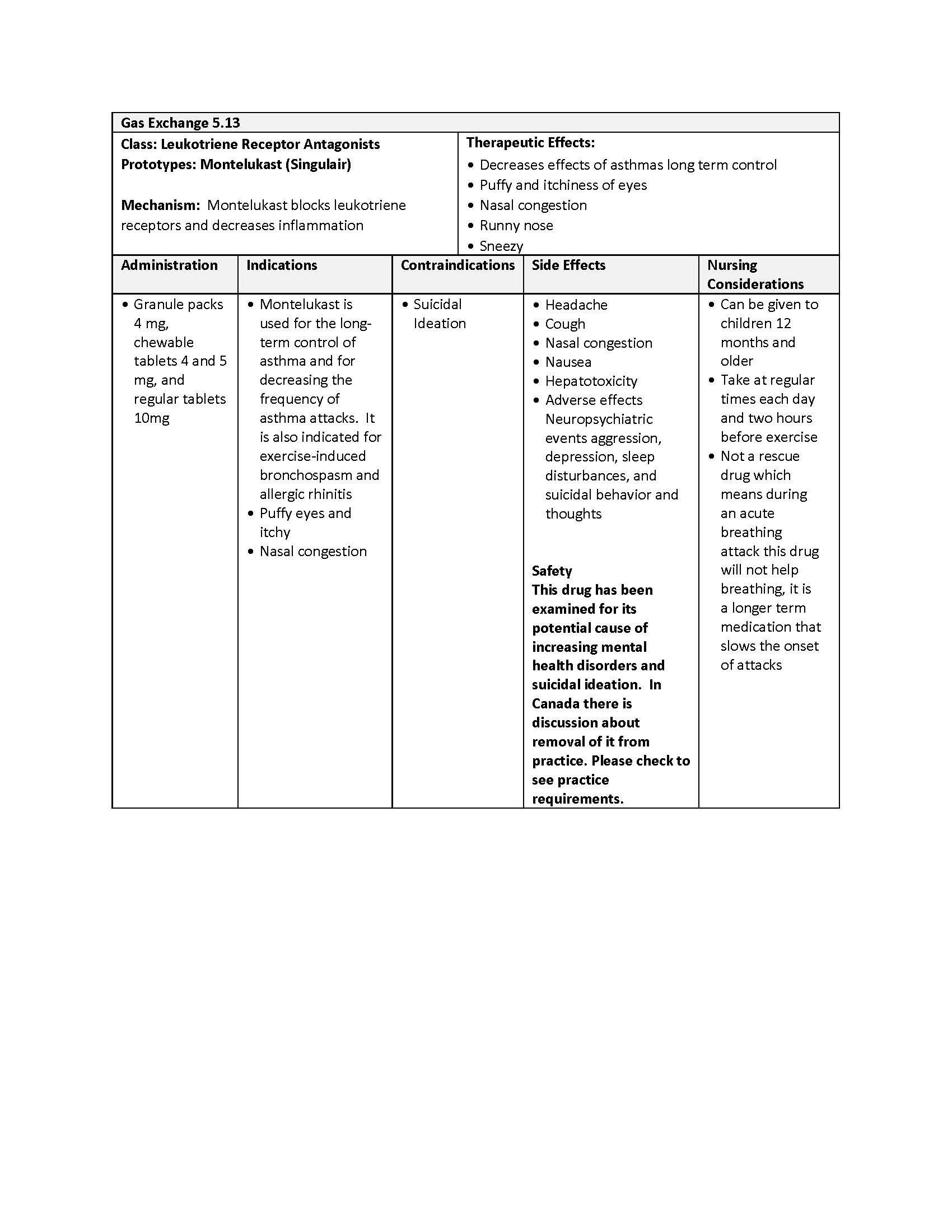Gas Exchange
5.13 Leukotriene Receptor Antagonists
Open Resources for Nursing (Open RN)
Leukotriene Receptor Antagonists
Montelukast is a leukotriene antagonist medication with a distinctly shaped tablet. See Figure 5.13.[1]
Mechanism of Action
Montelukast blocks leukotriene receptors and decreases inflammation.
Indications for Use
Montelukast is used for the long-term control of asthma and for decreasing the frequency of asthma attacks. It is also indicated for exercise-induced bronchospasm and allergic rhinitis.
Nursing Considerations Across the Lifespan
The medication is safe for children 12 months and older. It is available in granule packets and chewable tablets, as well as regular tablets.
Adverse/Side Effects
Montelukast can cause headache, cough, nasal congestion, nausea, and hepatotoxicity.[2]

Client Teaching & Education
Clients should be instructed to take medications at the same time each day and at least two hours prior to exercise. They should not discontinue medications without notifying the healthcare provider.[3]
Now let’s take a closer look at the medication card on montelukast in Table 5.13.[4],[5], [6],[7]
Table 5.13 Montelukast Medication Card

Media Attributions
- image9-6
- LRA
- "Singulair 10mg" by FedEx is licenced under CC BY-NC-ND 2.0 ↵
- Frandsen, G. & Pennington, S. (2018). Abrams’ clinical drug: Rationales for nursing practice (11th ed.). Wolters Kluwer. ↵
- uCentral from Unbound Medicine. https://www.unboundmedicine.com/ucentral ↵
- This work is a derivative of Pharmacology Notes: Nursing Implications for Clinical Practice by Gloria Velarde licensed under CC BY-NC-SA 4.0. ↵
- Frandsen, G. & Pennington, S. (2018). Abrams’ clinical drug: Rationales for nursing practice (11th ed.). Wolters Kluwer. ↵
- This work is a derivative of Daily Med by U.S. National Library of Medicine in the public domain. ↵
- Adams, M., Holland, N., & Urban, C. (2020). Pharmacology for nurses: A pathophysiologic approach (6th ed.). pp. 622-63 & 626. Pearson. ↵

